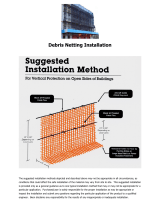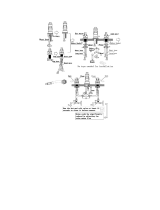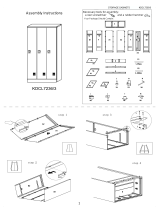
Contents
Safety notices .................................v
Site preparation and physical planning ......................1
Site selection ...................................1
Access .....................................1
Static electricity and floor resistance ...........................2
Space requirements .................................3
Floor construction and floor loading ...........................4
Raised floors ...................................4
Conductive contamination ..............................6
Computer room layout ................................7
Vibration and shock ................................10
Lighting ....................................12
Acoustics ....................................13
Electromagnetic compatibility .............................14
Computer room location ...............................15
Material and data storage protection ...........................17
Emergency planning for continuous operations .......................18
General power information ..............................19
Power quality .................................19
Voltage and frequency limits.............................24
Power load ..................................24
Power source ..................................25
Dual-power installation configurations .........................27
Dual-power installation: Redundant distribution panel and switch ...............27
Dual-power installation: Redundant distribution panel ...................28
Single distribution panel: Dual circuit breakers .....................29
Air conditioning determination .............................29
General guidelines for data centers ..........................30
Temperature and humidity design criteria .........................37
Temperature and humidity recording instruments ......................40
Relocation and temporary storage ............................40
Acclimation ...................................41
System air distribution ...............................41
Planning for the installation of rear door heat exchangers ....................45
Heat exchanger specifications ............................47
Heat exchanger performance ............................51
Water specifications for the secondary cooling loop .....................53
Water delivery specifications for secondary loops......................55
Layout and mechanical installation ..........................65
Heat exchanger installation overview .........................65
Heat exchanger filling and draining overview ......................65
Planning for heat exchangers in a raised floor environment .................66
Planning for heat exchangers in a non-raised floor environment ................73
Secondary cooling loop parts and services information ....................75
Miscellaneous parts supplier............................76
Services supplier ...............................76
Cooling distribution unit suppliers .........................76
Installation and support from IBM Integrated Technology Services offerings .............79
Planning for communications .............................80
Appendix. Notices ...............................83
Trademarks ...................................84
Electronic emission notices ..............................84
Class A Notices .................................84
© Copyright IBM Corp. 2007, 2009 iii
























